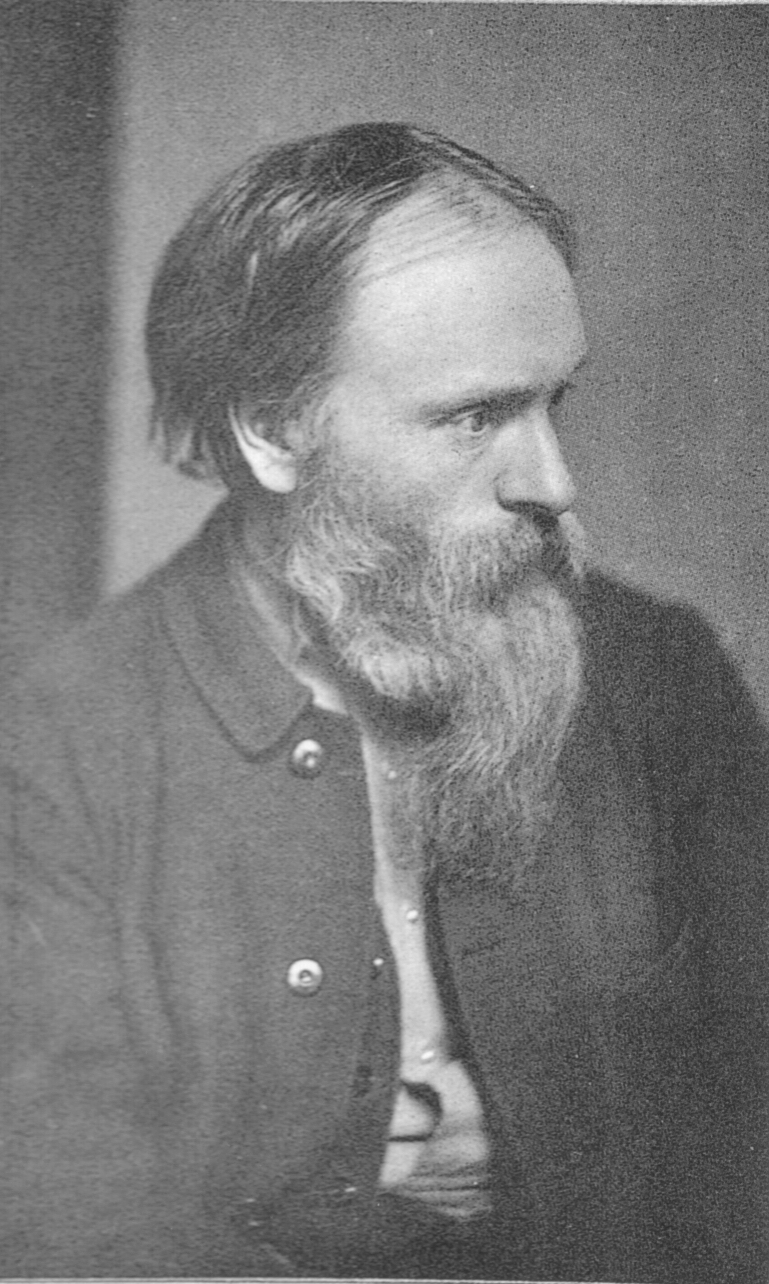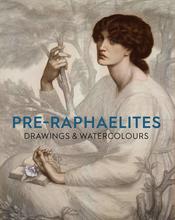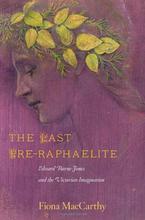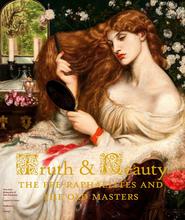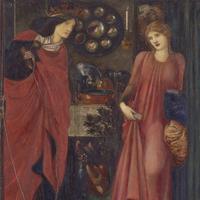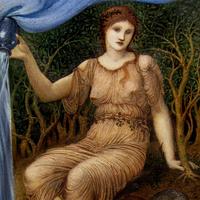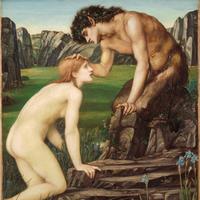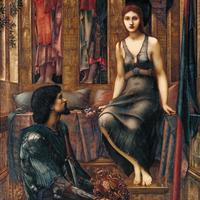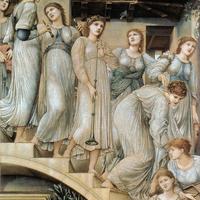More about Edward Burne-Jones
- All
- Info
- Shop
Works by Edward Burne-Jones

Contributor
Burne-Jones was this close to becoming a priest but, luckily for the art world, was drawn away at the last second.
Ned Jones was born in 1833, just a poor boy from a poor family. His father was a frame-maker and his mother died of scarlet fever a few days after his birth. He found a replacement mommy in the family’s housekeeper, and led as normal a life as any 19th century kid. He attended grammar school followed by art school, followed by a stint at Oxford studying theology. All signs pointed to li'l Ned becoming a minister until he met two people who would change the course of his entire life: William Morris and Dante Gabriel Rossetti. Burne-Jones and Morris were classmates and soon after meeting became friends. They had a mutual interest in poetry of Romantics like Tennyson and the writings of John Ruskin. They "visited churches and worshipped the Middle Ages and its literature.” Soon the pair met Dante Gabriel Rossetti. They had known about him before they actually met him, and when Rossetti said that maybe they should be artists, both Burne-Jones and Morris jumped at the idea. Rossetti said of Burne-Jones’ talent, “Jones's designs are marvels of finish and imaginative detail, unequaled by anything unless perhaps Albert Dürer's finest works.” Needless to say, Burne-Jones dropped out of Oxford and never looked back. He was part of the second wave of the Pre-Raphaelite Brotherhood, and once you’re a brother, you’re a brother for life.
At the tender age of 23, Burne-Jones married Georgie MacDonald, who was also a painter. (Fun fact: her sisters were the mothers of Prime Minister Stanley Baldwin and the poet Rudyard Kipling.) Burne-Jones had a really really hard time keeping it in his pants though, and ended up having an affair with one of his models, the Anglo-Greek, Maria Zambaco. His marriage was never the same afterwards, and funnily enough neither was his friendship with William Morris, who sided with Georgie in the scandal because his own wife also had an extramarital affair (with Rossetti). Real classy group we got here.
Burne-Jones may not be known as the most faithful husband, but he is known for his astounding body of work across many mediums. He worked with painting (obviously), ceramic tiles, stained glass, large-scale tapestries, and illustrated books. And because he was Burne-Jones, they were all amazing. His awards include but are not limited to an honorary degree from Oxford, a baronetcy (hence the “sir”), the presidency of the Birmingham Society of Artists, and a feature in the movie "An Education," directed by Lone Scherfig, which everyone should watch.
Sources
- "Edward Burne-Jones Biography (1833-1898) - Life Of An English Artist." Totally History. Accessed September 21, 2018. http://totallyhistory.com/edward-burne-jones/
- Flanders, Judith. A Circle Of Sisters: Alice Kipling, Georgiana Burne-Jones, Agnes Poynter And Louisa Baldwin. New York: W.W. Norton & Co., 2005. Accessed September 21, 2018. https://books.google.com/books?id=O0uJ2fro7ZAC
- Johnson, Ken. "Pining For A Burnished Time, Long Ago And Far Away." Nytimes.com. 2014. Last modified June 5, 2014. Accessed September 21, 2018. https://www.nytimes.com/2014/06/06/arts/design/the-pre-raphaelite-legac…
- "Jones, Sir Edward Coley Burne-, First Baronet." Oxforddnb.com. Accessed September 21, 2018. http://www.oxforddnb.com/abstract/10.1093/ref:odnb/9780198614128.001.00…
- "Sir Edward Coley Burne-Jones, 1St Baronet | British Painter." Encyclopedia Britannica. Accessed September 21, 2018. https://www.britannica.com/biography/Sir-Edward-Coley-Burne-Jones-1st-B…
Featured Content
Here is what Wikipedia says about Edward Burne-Jones
Sir Edward Coley Burne-Jones, 1st Baronet, ARA (/bɜːrnˈdʒoʊnz/; 28 August, 1833 – 17 June, 1898) was an English painter and designer associated with the Pre-Raphaelite Brotherhood's style and subject matter.
Burne-Jones worked with William Morris as a founding partner in Morris, Marshall, Faulkner & Co in the design of decorative arts.
Burne-Jones's early paintings show the influence of Dante Gabriel Rossetti, but by 1870 he had developed his own style. In 1877, he exhibited eight oil paintings at the Grosvenor Gallery (a new rival to the Royal Academy). These included The Beguiling of Merlin. The timing was right and Burne-Jones was taken up as a herald and star of the new Aesthetic Movement.
In the studio of Morris and Co. Burne-Jones worked as a designer of a wide range of crafts including ceramic tiles, jewellery, tapestries, and mosaics. Among his most significant and lasting designs are those for stained glass windows the production of which was a revived craft during the 19th century. His designs are still to be found in churches across the UK, with examples in the US and Australia.
Check out the full Wikipedia article about Edward Burne-Jones

